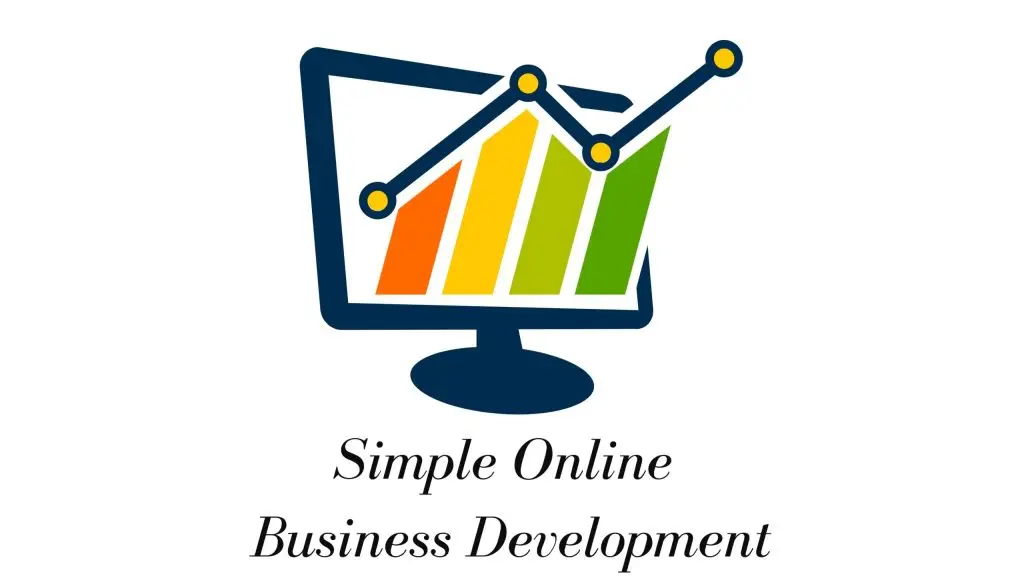So, you’re thinking about getting into affiliate marketing with blogs? That’s a smart move. It’s 2025, and making money online is more possible than ever, especially if you’ve got a blog. This guide is all about showing you the ropes, from starting your blog to really making some cash. We’ll cover how to pick a good topic, write stuff people want to read, and get your blog seen by lots of folks. It’s not super hard, but it does take some work. Let’s get started and see how you can turn your blog into a money-making machine.
Key Takeaways
- Blogs are a strong way to do affiliate marketing because they help you connect with people and get organic traffic.
- Picking a good topic for your blog and setting it up right are big first steps for making money.
- Writing good content that helps people and putting affiliate links in naturally is how you get sales.
- Getting people to your blog through search engines and social media helps your blog grow.
- To make more money, look at your numbers, try new things, and always learn about what’s new in affiliate marketing.
Unlocking the Power of Affiliate Marketing with Blogs
Why Blogs Are Your Secret Weapon for Affiliate Success
Okay, so you’re thinking about getting into affiliate marketing, right? Awesome! But with so many options out there, why should you even bother with a blog? Well, let me tell you, blogs are like the unsung heroes of the affiliate world. They’re not flashy, but they’re incredibly effective.
Think about it:
- Blogs build trust. People trust bloggers who consistently put out good stuff. That trust translates into clicks and sales.
- Blogs are SEO magnets. A well-optimized blog can pull in traffic from search engines for years. No need to keep paying for ads!
- Blogs let you get personal. You can really connect with your audience and recommend products that genuinely help them.
Blogs offer a platform to build authority, provide value, and establish long-term relationships with your audience. This makes them an ideal tool for affiliate marketing success.
Who Can Truly Thrive in Blog-Based Affiliate Marketing?
Honestly? Just about anyone! You don’t need to be some kind of tech wizard or marketing guru. If you’re passionate about something and you like to write, you’ve already got a head start. The key is to be genuine and helpful. Share your knowledge, be honest about your experiences, and focus on providing value to your readers. If you can do that, you’re golden. It’s about finding your niche and sticking with it.
Here’s a few things that will help you:
- Patience. It takes time to build a blog and an audience.
- Willingness to learn. SEO, content creation, marketing… there’s always something new to pick up.
- Consistency. Keep creating content, even when you don’t feel like it.
The Awesome Potential of Passive Income
Let’s talk about the best part: passive income. Imagine writing a blog post once, and then earning money from it for months, even years, to come. That’s the power of affiliate marketing with blogs. It’s not a get-rich-quick scheme, but it is a get-rich-eventually strategy. Of course, it takes work upfront. You need to create great content, promote your blog, and build an audience. But once you’ve done that, you can sit back and watch the commissions roll in. It’s like planting a tree and then enjoying the shade for years to come. Pretty cool, right?
Crafting Your Niche and Building Your Blog
Alright, so you’re ready to dive into the blogosphere and make some affiliate marketing magic happen? Awesome! This section is all about setting the stage for success. We’re talking about finding that perfect niche and getting your blog up and running. It might seem a little daunting at first, but trust me, it’s totally doable, and kinda fun too!
Discovering Your Perfect Niche for Maximum Impact
Okay, first things first: your niche. This is where a lot of people get hung up, but don’t sweat it. Think about what you’re genuinely interested in. What could you talk about for hours? What do you already know a lot about? That’s probably a good place to start.
Here’s a few things to consider:
- Passion: You’ll be writing about this stuff a lot, so make sure you actually like it!
- Profit Potential: Are there affiliate products you can promote in this niche? Do a little digging.
- Audience: Is there an audience for this? Are people searching for information about this topic? Use tools to discover blog niche ideas to help you find a topic you’re passionate about and connect with a dedicated audience.
Don’t overthink it. Your niche can evolve over time. The important thing is to just get started with something you’re interested in and that has some potential for affiliate marketing.
Setting Up Your Blog for Affiliate Awesomeness
Alright, you’ve got your niche picked out. Now it’s time to build your blog! This is where things get a little more technical, but again, nothing you can’t handle. There are tons of platforms out there, but I personally recommend WordPress. It’s super flexible, has tons of plugins, and there are a million tutorials online if you get stuck. Plus, it’s great for SEO.
Here’s the basic rundown:
- Choose a Domain Name: Make it catchy, relevant to your niche, and easy to remember. Try to include a keyword if you can.
- Get Hosting: This is where your blog lives on the internet. There are tons of hosting providers out there, so do some research and find one that fits your budget and needs.
- Install WordPress: Most hosting providers have a one-click install option, so it’s super easy.
- Pick a Theme: This is how your blog will look. There are tons of free and paid themes available. Choose one that’s clean, professional, and easy to navigate.
Essential Tools and Platforms to Get Started
Okay, so you’ve got your blog set up. Now, what tools do you need to actually, you know, run it? Don’t worry, you don’t need to break the bank. There are plenty of free and affordable options out there. Here’s a few of my favorites:
- Keyword Research Tool: Google Keyword Planner (free), or something like Ahrefs or SEMrush (paid, but worth it if you’re serious).
- SEO Plugin: Yoast SEO or Rank Math (both have free versions).
- Email Marketing Platform: Mailchimp (free for up to 2,000 subscribers) or ConvertKit (paid, but more powerful).
- Image Editor: Canva (free and super easy to use).
And that’s it! You’re ready to start creating content and making some affiliate marketing magic happen. Let’s get to it!
Creating Irresistible Content That Converts
Writing Engaging Blog Posts That Readers Love
Okay, so you’ve got your blog all set up. Now comes the fun part: actually writing stuff! But not just any stuff. We’re talking about content that people actually want to read. Think about it – nobody wants to wade through boring, dry text. You need to hook them in from the first sentence.
- Start with a killer headline. Seriously, spend some time on this. It’s the first (and sometimes only) thing people see.
- Write like you’re talking to a friend. Ditch the corporate speak and be yourself.
- Break up your text with images, videos, and even just some good old-fashioned white space. Nobody wants to see a wall of text.
Don’t be afraid to show your personality. People connect with authenticity. If you’re passionate about your niche, let it shine through in your writing. It makes a huge difference.
Integrating Affiliate Links Naturally and Effectively
Alright, let’s talk about the money-making part. You don’t want your blog to feel like one giant ad, right? The key is to weave those affiliate links in so smoothly that people barely notice… until they’re clicking, of course!
- Only promote products you genuinely believe in. Your audience will see right through you if you’re just pushing junk.
- Use anchor text that fits the context. Instead of "click here," try something like "my favorite blender" or "the best running shoes I’ve ever owned."
- Don’t be afraid to write reviews! People love hearing about other people’s experiences with products.
Content Strategies for Long-Term Success
This isn’t a sprint; it’s a marathon. You need a plan to keep churning out awesome content that keeps people coming back for more. Think about the big picture and how each post fits into your overall strategy. Consistency is key here.
- Create an editorial calendar. Plan out your topics in advance so you’re not scrambling for ideas at the last minute.
- Repurpose your content. Turn a blog post into a video, or a series of tweets into a blog post. Get the most mileage out of every piece of content.
- Stay up-to-date on the latest trends in your niche. What are people talking about? What problems are they trying to solve? Address those things in your content.
Driving Traffic and Boosting Visibility
Okay, so you’ve got a blog, you’ve got awesome content, and you’re ready to make some affiliate marketing magic happen. But here’s the thing: nobody’s gonna buy what you’re selling if nobody sees it! That’s where driving traffic comes in. Let’s talk about how to get those eyeballs on your blog and turn them into paying customers. It’s all about visibility, baby!
Mastering SEO for Organic Growth
SEO, or Search Engine Optimization, might sound intimidating, but it’s really just about making your blog easy for search engines like Google to find. Think of it as making your blog super attractive to Google’s algorithms. The better your SEO, the higher you’ll rank in search results, and the more organic traffic you’ll get.
Here’s a few things to keep in mind:
- Keyword Research: Find out what people are searching for in your niche. Tools like Google Keyword Planner can help.
- On-Page Optimization: Use those keywords naturally in your titles, headings, and throughout your content. Don’t stuff them in, though! Google hates that.
- Link Building: Get other websites to link to your blog. This tells Google your site is trustworthy and authoritative. Guest posting is a great way to do this.
SEO is a long-term game. You won’t see results overnight, but with consistent effort, you’ll start to climb those search rankings and watch the traffic roll in. It’s like planting a tree – it takes time to grow, but eventually, it provides shade (and in this case, income!).
Leveraging Social Media to Expand Your Reach
Social media is your best friend when it comes to getting the word out about your blog. Think of each platform as a different party where you can mingle and tell people about your awesome blog. But remember, it’s not just about blasting links everywhere. It’s about engaging with your audience and building a community.
Here’s how to make the most of it:
- Choose the Right Platforms: Figure out where your target audience hangs out. Is it Instagram, Facebook, TikTok, or somewhere else? Focus your efforts where they are.
- Share Your Content: Post links to your latest blog posts, but also share other interesting and relevant content. Mix it up!
- Engage with Your Followers: Respond to comments, answer questions, and participate in conversations. Be a real person, not just a robot.
Exploring Other Traffic-Generating Tactics
SEO and social media are great, but there are tons of other ways to drive traffic to your blog. Don’t be afraid to get creative and try new things! Think outside the box – or, in this case, outside the blog.
Here are some ideas:
- Email Marketing: Build an email list and send out regular newsletters with links to your latest posts. Email marketing campaigns can be super effective.
- Paid Advertising: Consider running ads on Google, social media, or other platforms. This can be a quick way to get traffic, but make sure you track your results to see if it’s worth the investment.
- Collaborate with Other Bloggers: Partner with other bloggers in your niche to cross-promote each other’s content. It’s a win-win!
Optimizing for Earnings and Growth

Analyzing Your Data for Smarter Decisions
Okay, so you’ve got your blog up and running, and hopefully, you’re seeing some traffic. But how do you know what’s actually working? That’s where data analysis comes in. Don’t worry, it’s not as scary as it sounds! Think of it as detective work for your blog. We’re looking for clues to help us make more money.
Here’s what you should be tracking:
- Page Views: Which posts are getting the most eyeballs? This tells you what your audience is interested in.
- Click-Through Rates (CTR): Are people clicking on your affiliate links? If not, maybe the placement or the offer isn’t right.
- Conversion Rates: How many clicks are turning into actual sales? A low conversion rate could mean the product isn’t a good fit for your audience, or the product page isn’t convincing.
Use tools like Google Analytics (it’s free!) to gather this data. Then, look for patterns. Are certain types of posts performing better? Are specific affiliate marketing advertising strategies leading to more sales? Once you know what’s working, do more of it!
Data analysis isn’t about being a math whiz. It’s about understanding your audience and making informed decisions. The more you analyze, the better you’ll get at predicting what will resonate with your readers and drive those sweet, sweet conversions.
Scaling Your Blog for Even Bigger Returns
So, you’ve analyzed your data, tweaked your strategy, and you’re seeing some consistent income. Awesome! Now it’s time to think bigger. How can you scale your blog to earn even more? Scaling isn’t just about working harder; it’s about working smarter.
Here are a few ideas:
- Outsource Tasks: Hire a writer to create more content, a virtual assistant to handle administrative tasks, or a social media manager to boost your online presence. This frees you up to focus on the big-picture stuff.
- Diversify Your Income Streams: Don’t rely solely on one affiliate program. Explore other affiliate opportunities that align with your niche. Consider adding display ads or even creating your own digital product.
- Invest in Paid Advertising: Once you have a proven strategy, consider using paid ads to drive more traffic to your best-performing content. Just be sure to track your ROI (return on investment) to make sure it’s profitable.
Staying Ahead with the Latest Affiliate Trends
The world of affiliate marketing is constantly evolving. What worked last year might not work this year. That’s why it’s crucial to stay up-to-date with the latest trends and adapt your strategy accordingly.
Here’s how to stay in the know:
- Read Industry Blogs and Newsletters: There are tons of great resources out there that cover the latest affiliate marketing news and trends. Subscribe to a few and make it a habit to read them regularly.
- Attend Industry Events and Webinars: These are great opportunities to learn from experts, network with other affiliates, and discover new strategies.
- Experiment and Test: Don’t be afraid to try new things! The best way to stay ahead is to experiment with different strategies and see what works for you. Just be sure to track your results so you can learn from your successes and failures.
Remember, the affiliate marketing landscape is always shifting, so continuous learning and adaptation are key to long-term success.
Building Trust and Credibility with Your Audience
Authenticity: Your Key to Lasting Relationships
Okay, so you wanna build a blog that actually makes money, right? It’s not just about slapping up some content and hoping for the best. People are smart. They can smell a fake from a mile away. Authenticity is the bedrock of any successful affiliate blog.
Think about it: would you buy something from someone you didn’t trust? Probably not. So, how do you become trustworthy? Be yourself! Let your personality shine through. Share your own experiences, even the not-so-glamorous ones. People connect with realness. Don’t try to be someone you’re not, because it’ll eventually catch up to you. And when it does, your audience will bounce faster than a rubber ball.
Providing Genuine Value to Your Readers
It’s easy to get caught up in the money-making aspect of affiliate marketing tips, but remember why people are visiting your blog in the first place: they’re looking for something useful. If you’re not providing that, they’re gone. Simple as that.
Here’s how to give your readers something they’ll actually appreciate:
- Solve their problems: What are their pain points? Address them directly.
- Offer practical advice: Don’t just talk at them; give them actionable steps.
- Share your knowledge: Become an authority in your niche by showcasing your expertise.
Think of your blog as a resource, not just a sales platform. The more value you provide, the more your audience will trust you, and the more likely they’ll be to click on your affiliate links. It’s a win-win!
Navigating Disclosure and Ethical Practices
Alright, let’s talk about the not-so-fun but super important stuff: disclosures. It’s not exactly thrilling, but it’s crucial for maintaining trust and staying on the right side of the law. Basically, you need to be upfront about the fact that you’re earning a commission when someone clicks on your affiliate links and makes a purchase.
Here’s the deal:
- Be clear and conspicuous: Don’t bury your disclosure in tiny font at the bottom of the page. Make it easy to see.
- Disclose on every page: Yep, every single one where you have affiliate links. No exceptions.
- Use plain language: No need for fancy legal jargon. Just say something like, "I may earn a commission if you click on my links and make a purchase."
It might seem like a small thing, but being transparent about your affiliate relationships can actually boost your credibility. People appreciate honesty, and they’re more likely to support someone who’s upfront about how they make money. Plus, it just feels good to do things the right way, doesn’t it?
Embracing the Journey: Consistency and Learning
Alright, so you’ve got your blog set up, you’re pumping out content, and you’re ready to rake in the affiliate marketing cash, right? Well, hold on a sec. It’s not always that simple. This is a journey, not a sprint. It’s about sticking with it, learning as you go, and not getting discouraged when things don’t go exactly as planned. Let’s talk about how to embrace that journey!
The Power of Consistent Effort in Affiliate Marketing
Consistency is seriously key. Think of it like this: you can’t expect to plant a seed one day and harvest a tree the next. You gotta water it, give it sunlight, and protect it from the elements. Same goes for your blog. Regularly posting high-quality content keeps your audience engaged and coming back for more.
Here’s what consistent effort looks like:
- Creating a content calendar and sticking to it (as much as possible!).
- Promoting your content regularly on social media.
- Engaging with your audience in the comments section.
Learning from Every Step of Your Blogging Adventure
Every blog post, every marketing campaign, every interaction with your audience is a learning opportunity. Don’t be afraid to experiment, try new things, and see what works. And more importantly, don’t be afraid to fail. Failure is just a stepping stone to success.
Analyze your stats. What posts are performing well? Which ones are flopping? What keywords are driving traffic? Use this data to inform your future content strategy.
Here are some ways to learn:
- Read other blogs in your niche. See what they’re doing well and what you can learn from them.
- Take online courses or attend webinars on affiliate marketing. There’s always something new to learn.
- Join affiliate marketing communities and forums. Connect with other marketers, ask questions, and share your experiences. Consider joining accountability groups to stay on track.
Celebrating Your Wins and Growing from Challenges
It’s easy to get caught up in the day-to-day grind and forget to celebrate your successes. Did you get your first affiliate sale? Did you reach a new milestone in traffic? Did you get a really awesome comment on your blog? Take a moment to acknowledge it and feel good about it! These small wins will keep you motivated and inspired.
But what about the challenges? They’re inevitable. Maybe a campaign flopped, or you got negative feedback. Don’t let it get you down. Instead, use it as an opportunity to grow. Figure out what went wrong and how you can do better next time. Remember, monetize your blog is a marathon, not a sprint. Keep learning, keep growing, and keep celebrating those wins!
Wrapping It Up: Your Path to Affiliate Marketing Success
So, there you have it! We’ve gone through a lot, from picking your blog’s topic to getting people to actually see your stuff and, of course, making some money. It might seem like a lot to take in, but honestly, the main thing is just to get started. Don’t wait for everything to be perfect. Just begin, try things out, and learn as you go. The world of affiliate marketing is always changing, so staying curious and open to new ideas will help you keep growing. You’ve got this!
Frequently Asked Questions
What exactly is affiliate marketing?
Affiliate marketing lets you earn money by promoting products or services from other companies. When someone buys something through your special link, you get a cut of the sale. It’s like being a salesperson without needing to make your own products.
Why are blogs a good choice for affiliate marketing?
Blogs are super effective because they can show up high in search results, bringing in lots of people for free. You can also build trust with your readers by sharing helpful information, making them more likely to buy what you suggest.
Who can really succeed with this kind of marketing?
Anyone who likes to write and has a passion for a certain topic can do well. You don’t need to be a tech wizard, but you do need to be patient, plan things out, and learn how to get your blog seen by others.
How much money can I actually make?
It depends on how much effort you put in and how well you connect with your audience. Some people make a little extra cash, while others earn a full-time living. The key is to keep creating good stuff that people want to read.
What’s the first step to getting started?
Start by picking a topic you love and building a simple blog. Then, write helpful articles and include your special affiliate links naturally. Don’t forget to tell your readers that you might earn money from their purchases; it’s the honest thing to do!
Is affiliate marketing through blogs a way to earn passive income?
Yes, it can be! Once your blog posts are out there, they can keep bringing in money even when you’re not actively working. It’s like having a helpful employee working for you 24/7.




 It’s 2025, and the world of business is moving fast. We’re seeing some truly great startup companies pop up, changing how we do things. This article will tell you all about these new businesses and what makes them special. We’ll look at the big ideas driving them, the companies themselves, and why they’re set to do well. Get ready to see what’s next!
It’s 2025, and the world of business is moving fast. We’re seeing some truly great startup companies pop up, changing how we do things. This article will tell you all about these new businesses and what makes them special. We’ll look at the big ideas driving them, the companies themselves, and why they’re set to do well. Get ready to see what’s next! Okay, so everyone is talking about AI, but in 2025, it’s not just buzz – it’s the backbone of some seriously cool startups. We’re seeing AI and machine learning move beyond basic automation. Think predictive analytics that actually predict, and personalized experiences that feel, well, personal. It’s about smart systems that learn and adapt, making everything more efficient.
Okay, so everyone is talking about AI, but in 2025, it’s not just buzz – it’s the backbone of some seriously cool startups. We’re seeing AI and machine learning move beyond basic automation. Think predictive analytics that actually predict, and personalized experiences that feel, well, personal. It’s about smart systems that learn and adapt, making everything more efficient. Healthcare is ripe for disruption, and these startups are leading the charge with digital solutions. From telehealth platforms to AI-powered diagnostics, they’re transforming how we access and experience healthcare. They’re making healthcare more convenient, affordable, and personalized.
Healthcare is ripe for disruption, and these startups are leading the charge with digital solutions. From telehealth platforms to AI-powered diagnostics, they’re transforming how we access and experience healthcare. They’re making healthcare more convenient, affordable, and personalized.




































